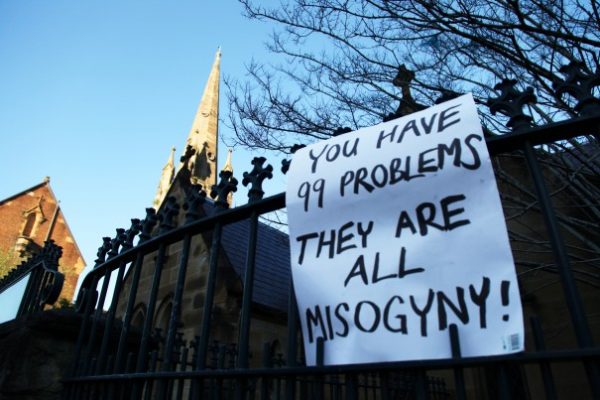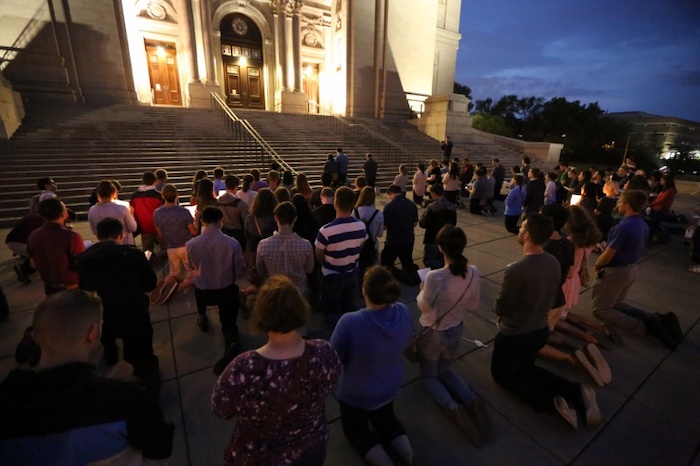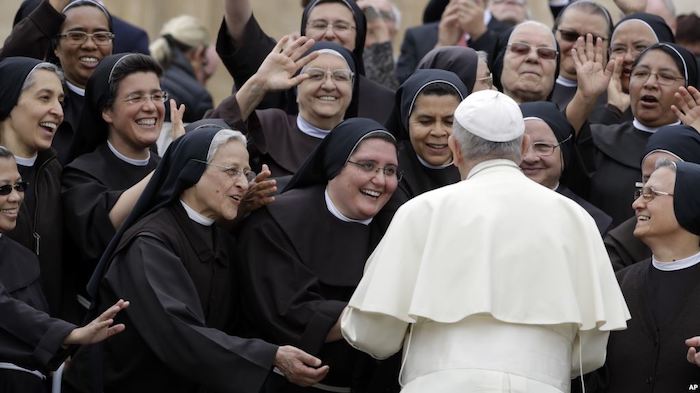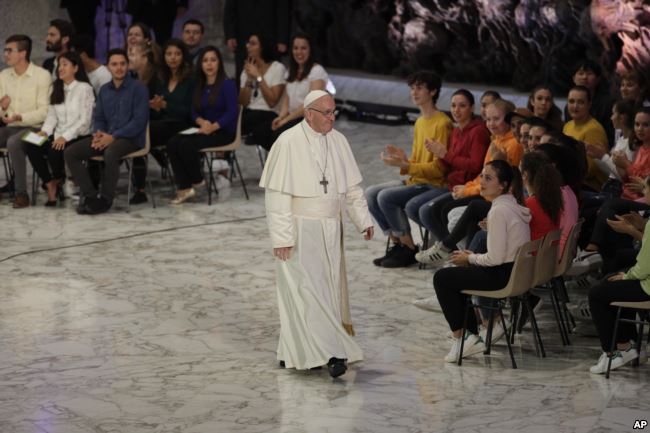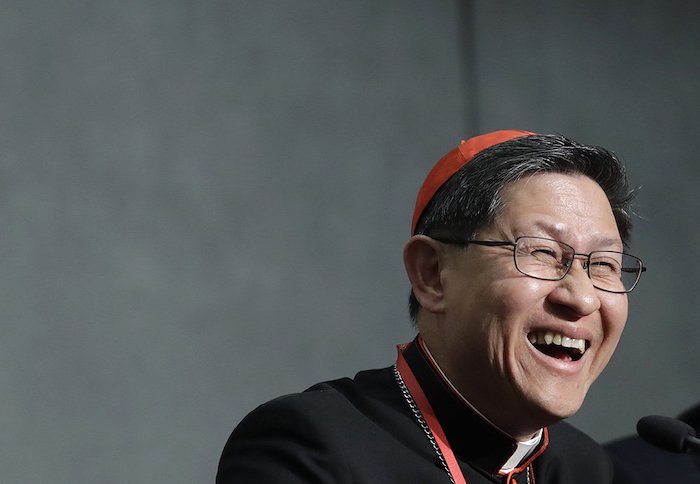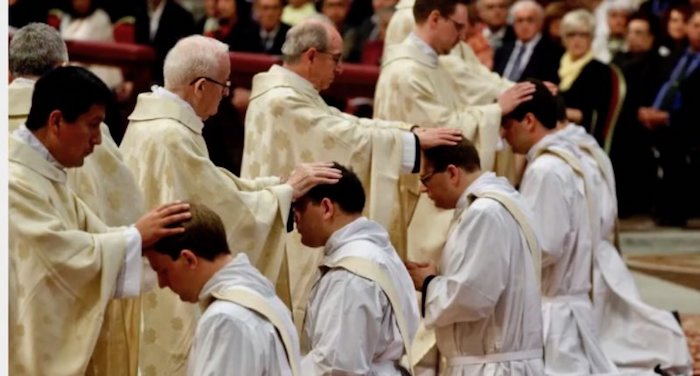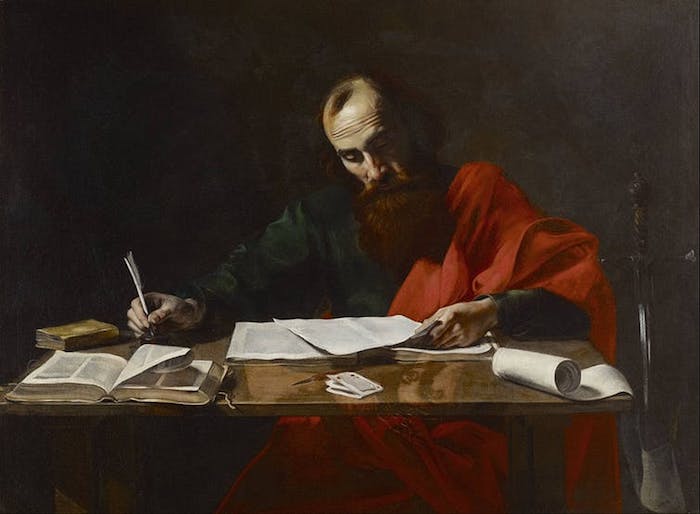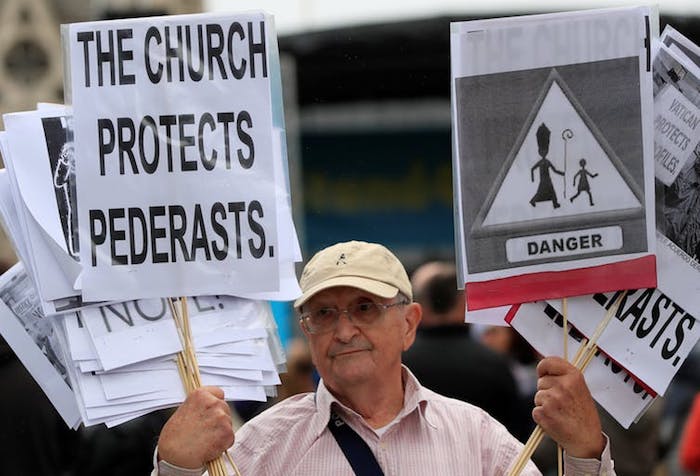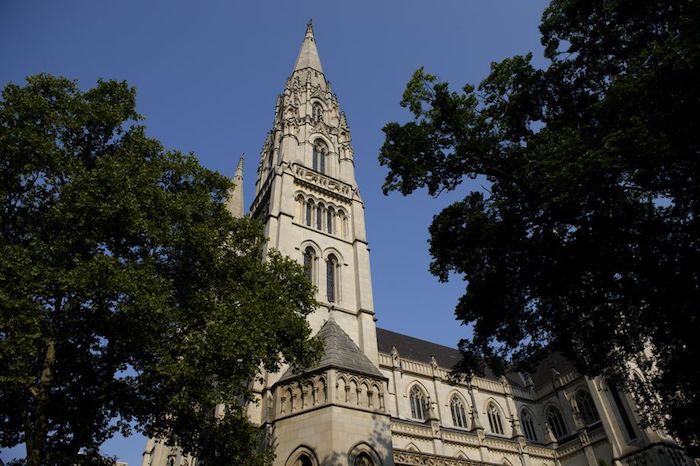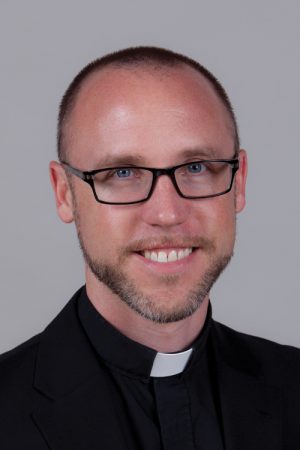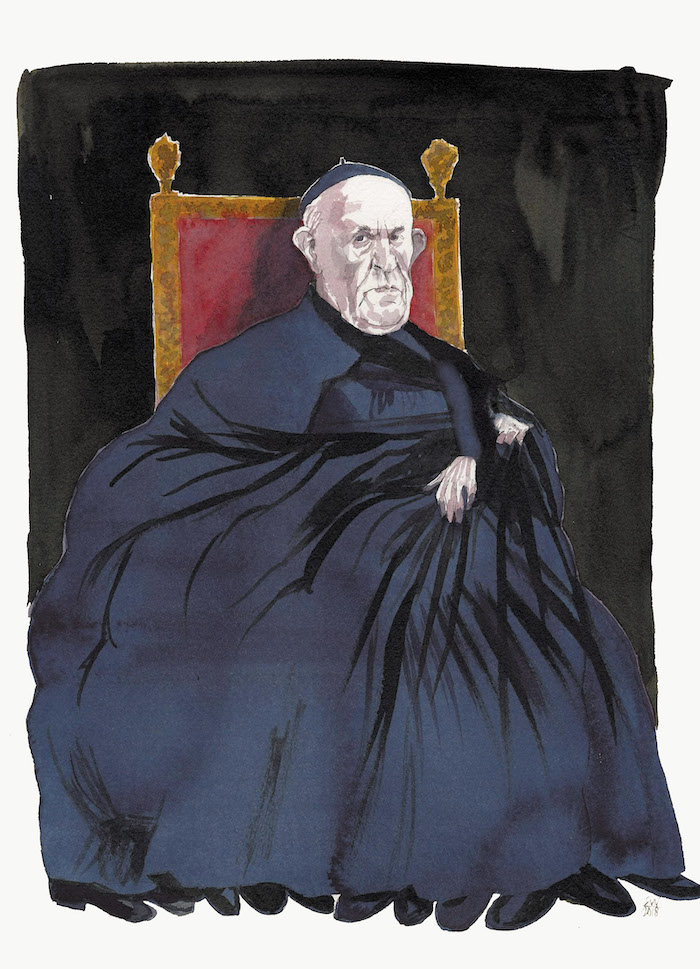
On August 25 Archbishop Carlo Maria Viganò published an eleven-page letter in which he accused Pope Francis of ignoring and covering up evidence of sexual abuse in the Catholic Church and called for his resignation. It was a declaration of civil war by the church’s conservative wing. Viganò is a former apostolic nuncio to the US, a prominent member of the Roman Curia—the central governing body of the Holy See—and one of the most skilled practitioners of brass-knuckle Vatican power politics. He was the central figure in the 2012 scandal that involved documents leaked by Pope Benedict XVI’s personal butler, including letters Viganò wrote about corruption in Vatican finances, and that contributed to Benedict’s startling decision to abdicate the following year. Angry at not having been made a cardinal and alarmed by Francis’s supposedly liberal tendencies, Viganò seems determined to take out the pope.
As a result of Viganò’s latest accusations and the release eleven days earlier of a Pennsylvania grand jury report that outlines in excruciating detail decades of sexual abuse of children by priests, as well as further revelations of sexual misconduct by Cardinal Theodore McCarrick, the former archbishop of Washington, D.C., Francis’s papacy is now in a deep, possibly fatal crisis. After two weeks of silence, Francis announced in mid-September that he would convene a large-scale gathering of the church’s bishops in February to discuss the protection of minors against sexual abuse by priests.
The case of Cardinal McCarrick, which figures heavily in Viganò’s letter, is emblematic of the church’s failure to act on the problem of sexual abuse—and of the tendentiousness of the letter itself. In the 1980s stories began to circulate that McCarrick had invited young seminarians to his beach house and asked them to share his bed. Despite explicit allegations that were relayed to Rome, in 2000 Pope John Paul II appointed him archbishop of Washington, D.C., and made him a cardinal. Viganò speculates that the pope was too ill to know about the allegations, but does not mention that the appointment came five years before John Paul’s death. He also praises Benedict XVI for finally taking action against McCarrick by sentencing him to a life of retirement and penance, and then accuses Francis of revoking the punishment and relying on McCarrick for advice on important church appointments. If Benedict did in fact punish McCarrick, it was a very well kept secret, because he continued to appear at major church events and celebrate mass; he was even photographed with Viganò at a church celebration.
Viganò’s partial account of the way the church handled the allegations about McCarrick is meant to absolve Pope Francis’s predecessors, whose conservative ideology he shares. Viganò lays the principal blame for failing to punish McCarrick on Francis, who does appear to have mishandled the situation—one he largely inherited. He may have decided to ignore the allegations because, while deplorable, they dated back thirty years and involved seminarians, who were adults, not minors. Last June, however, a church commission found credible evidence that McCarrick had behaved inappropriately with a sixteen-year-old altar boy in the early 1970s, and removed him from public ministry; a month later Francis ordered him to observe “a life of prayer and penance in seclusion,” and he resigned from the College of Cardinals. On October 7, Cardinal Marc Ouellet, prefect of the Congregation for Bishops at the Vatican, issued a public letter offering a vigorous defense of Francis and a direct public rebuke of his accuser:
Francis had nothing to do with McCarrick’s promotions to New York, Metuchen, Newark and Washington. He stripped him of his Cardinal’s dignity as soon as there was a credible accusation of abuse of a minor….
Dear Viganò, in response to your unjust and unjustified attack, I can only conclude that the accusation is a political plot that lacks any real basis that could incriminate the Pope and that profoundly harms the communion of the Church.
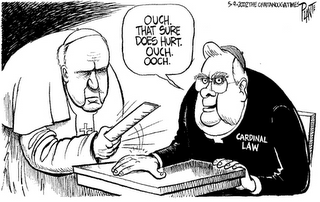 The greatest responsibility for the problem of sexual abuse in the church clearly lies with Pope John Paul II, who turned a blind eye to it for more than twenty years. From the mid-1980s to 2004, the church spent $2.6 billion settling lawsuits in the US, mostly paying victims to remain silent. Cases in Ireland, Australia, England, Canada, and Mexico followed the same depressing pattern: victims were ignored or bullied, even as offending priests were quietly transferred to new parishes, where they often abused again. “John Paul knew the score: he protected the guilty priests and he protected the bishops who covered for them, he protected the institution from scandal,” I was told in a telephone interview by Father Thomas Doyle, a canon lawyer who was tasked by the papal nuncio to the US with investigating abuse by priests while working at the Vatican embassy in Washington in the mid-1980s, when the first lawsuits began to be filed.
The greatest responsibility for the problem of sexual abuse in the church clearly lies with Pope John Paul II, who turned a blind eye to it for more than twenty years. From the mid-1980s to 2004, the church spent $2.6 billion settling lawsuits in the US, mostly paying victims to remain silent. Cases in Ireland, Australia, England, Canada, and Mexico followed the same depressing pattern: victims were ignored or bullied, even as offending priests were quietly transferred to new parishes, where they often abused again. “John Paul knew the score: he protected the guilty priests and he protected the bishops who covered for them, he protected the institution from scandal,” I was told in a telephone interview by Father Thomas Doyle, a canon lawyer who was tasked by the papal nuncio to the US with investigating abuse by priests while working at the Vatican embassy in Washington in the mid-1980s, when the first lawsuits began to be filed.
Benedict was somewhat more energetic in dealing with the problem, but his papacy began after a cascade of reporting had appeared on priestly abuse, beginning with an investigation published by the Boston Globe in 2002 (the basis for Spotlight, the Oscar-winning film of 2015). The church was faced with mass defections and the collapse of donations from angry parishioners, which forced Benedict to confront the issue directly.
Francis’s election inspired great hopes for reform. But those who expected him to make a clean break with this history of equivocation and half-measures have been disappointed. He hesitated, for example, to meet with victims of sexual abuse during his visit to Chile in January 2018 and then insulted them by insisting that their claims that the local bishop had covered up the crimes of a notorious abuser were “calumny.” In early October, he expelled from the priesthood two retired Chilean bishops who had been accused of abuse. But when he accepted the resignation of Cardinal Donald Wuerl—who according to the Pennsylvania grand jury report repeatedly mishandled accusations of abuse when he was bishop of Pittsburgh—he praised Wuerl for his “nobility.” Francis seems to take one step forward and then one step backward.
Viganò is correct in writing that one of Francis’s closest advisers, Cardinal Oscar Rodriguez Maradiaga, disregarded a grave case of abuse occurring right under his nose in Honduras. One of Maradiaga’s associates, Auxiliary Bishop Juan José Pineda Fasquelle of Tegucigalpa, was accused of abusing students at the seminary he helped to run. Last June, forty-eight of the 180 seminarians signed a letter denouncing the situation there. “We are living and experiencing a time of tension in our house because of gravely immoral situations, above all of an active homosexuality inside the seminary that has been a taboo all this time,” the seminarians wrote. Maradiaga initially denounced the writers as “gossipers,” but Pineda was forced to resign a month later.
“I feel badly for Francis because he doesn’t know whom to trust,” Father Doyle said. Almost everyone in a senior position in the Catholic Church bears some guilt for covering up abuse, looking the other way, or resisting transparency. The John Jay Report (2004) on sexual abuse of minors by priests, commissioned by the US Conference of Catholic Bishops, indicated that the number of cases increased during the 1950s and 1960s, was highest in the 1970s, peaking in 1980, and has gradually diminished since then. Francis may have hoped that the problem would go away and feared that a true housecleaning would leave him with no allies in the Curia.
Much of the press coverage of the scandal has been of the Watergate variety: what the pope knows, when he found out, and so forth. This ignores a much bigger issue that no one in the church wants to talk about: the sexuality of priests and the failure of priestly celibacy.
Viganò blames the moral crisis of the papacy on the growing “homosexual current” within the church. There is indeed a substantial minority of gay priests. The Reverend Donald B. Cozzens, a Catholic priest and longtime rector of a seminary in Ohio, wrote in his book The Changing Face of the Priesthood (2000) that “the priesthood is, or is becoming, a gay profession.” There have been no large surveys, using scientific methods of random sampling, of the sexual life of Catholic priests. Many people—a priest in South Africa, a journalist in Spain, and others—have done partial studies that would not pass scientific muster. The late Dr. Richard Sipe, a former priest turned psychologist, interviewed 1,500 priests for an ethnographic study.
There is some self-selection by priests who agree to answer questions or fill out questionnaires or seek treatment, which is why the estimates on, say, gay priests vary so widely. But the studies are consistent in showing high percentages of sexually active priests and of gay priests. As Thomas Doyle wrote in 2004, “Knowledgeable observers, including authorities within the Church, estimate that 40–50 percent of all Catholic priests have a homosexual orientation, and that half of these are sexually active.” Sipe came to the conclusion that “50 percent of American clergy were sexually active…and between 20 and 30 percent have a homosexual orientation and yet maintained their celibacy in an equal proportion with heterosexually oriented clergy.”
In his letter Viganò repeats the finding in the John Jay Report that 81 percent of the sexual abuse cases involve men abusing boys. But he ignores its finding that those who actually identify as homosexual are unlikely to engage in abuse and are more likely to seek out adult partners. Priests who abuse boys are often confused about their sexuality; they frequently have a negative view of homosexuality, yet are troubled by their own homoerotic urges.
Viganò approvingly cites Sipe’s work four times. But he ignores Sipe’s larger argument, made on his website in 2005, that “the practice of celibacy is the basic problem for bishops and priests.” Sipe also wrote, “The Vatican focus on homosexual orientation is a smoke screen to cover the pervasive and greater danger of exposing the sexual behavior of clerics generally. Gay priests and bishops practice celibacy (or fail at it) in the same proportions as straight priests and bishops do.” He denounced McCarrick’s misconduct on numerous occasions.
While the number of priests abusing children—boys or girls under the age of sixteen—is comparatively small, many priests have secret sex lives (both homosexual and heterosexual), which does not leave them in the strongest position to discipline those who abuse younger victims. Archbishop Rembert Weakland, for example, the beloved liberal archbishop of Milwaukee from 1977 to 2002, belittled victims who complained of sexual abuse by priests and then quietly transferred predatory priests to other parishes, where they continued their abusive behavior. It was revealed in 2002 that the Milwaukee archdiocese had paid $450,000 in hush money to an adult man with whom Weakland had had a longtime secret sexual relationship, which might have made him more reluctant to act against priests who abused children. But this could be true of heterosexual as well as homosexual priests who are sexually active.
Viganò believes that the church’s moral crisis derives uniquely from its abandonment of clear, unequivocal, strict teaching on moral matters, and from overly permissive attitudes toward homosexuality in particular. He does not want to consider the ways in which its traditional teaching on sexuality—emphasized incessantly by recent popes—has contributed to the present crisis. The modern church has boxed itself into a terrible predicament. Until about half a century ago, it was able to maintain an attitude of wise hypocrisy, accepting that priests were often sexually active but pretending that they weren’t. The randy priests and monks (and nuns) in Chaucer and Boccaccio were not simply literary tropes; they reflected a simple reality: priests often found it impossible to live the celibate life. Many priests had a female “housekeeper” who relieved their loneliness and doubled as life companions. Priests frequently had affairs with their female parishioners and fathered illegitimate children. The power and prestige of the church helped to keep this sort of thing a matter of local gossip rather than international scandal.
When Pope John XXIII convened the Second Vatican Council in 1962, bishops from many parts of the world hoped that the church would finally change its doctrine and allow priests to marry. But John XXIII died before the council finished its work, which was then overseen by his successor, Paul VI (one of the popes most strongly rumored to have been gay). Paul apparently felt that the sweeping reforms of Vatican II risked going too far, so he rejected the pleas for priestly marriage and issued his famous encyclical Humanae Vitae, which banned contraception, overriding a commission he had convened that concluded that family planning and contraception were not inconsistent with Catholic doctrine.
Opposing priestly marriage and contraception placed the church on the conservative side of the sexual revolution and made adherence to strict sexual norms a litmus test for being a good Catholic, at a time when customs were moving rapidly in the other direction. Only sex between a man and a woman meant for procreation and within the institution of holy matrimony was allowed. That a man and a woman might have sex merely for pleasure was seen as selfish and sinful. Some 125,000 priests, according to Richard Sipe, left the priesthood after Paul VI closed the door on the possibility of priestly marriage. Many, like Sipe, were straight men who left to marry. Priestly vocations plummeted.
Conversely, the proportion of gay priests increased, since it was far easier to hide one’s sex life in an all-male 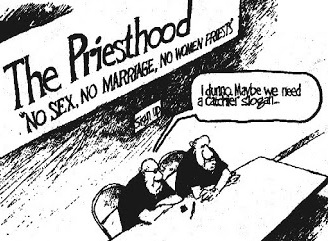 community with a strong culture of secrecy and aversion to scandal. Many devout young Catholic men also entered the priesthood in order to try to escape their unconfessable urges, hoping that a vow of celibacy would help them suppress their homosexual leanings. But they often found themselves in seminaries full of sexual activity. Father Doyle estimates that approximately 10 percent of Catholic seminarians were abused (that is, drawn into nonconsensual sexual relationships) by priests, administrators, or other seminarians.
community with a strong culture of secrecy and aversion to scandal. Many devout young Catholic men also entered the priesthood in order to try to escape their unconfessable urges, hoping that a vow of celibacy would help them suppress their homosexual leanings. But they often found themselves in seminaries full of sexual activity. Father Doyle estimates that approximately 10 percent of Catholic seminarians were abused (that is, drawn into nonconsensual sexual relationships) by priests, administrators, or other seminarians.
This problem is nothing new. Homosocial environments—prisons, single-sex schools, armies and navies, convents and monasteries—have always been places of homosexual activity. “Man is a loving animal,” in Sipe’s words. The Benedictines, one of the first monastic orders, created elaborate rules to minimize homosexual activity, insisting that monks sharing a room sleep fully clothed and with the lights on.
The modern Catholic Church has failed to grasp what its founders understood quite well. “It is better to marry than to burn with passion,” Saint Paul wrote when his followers asked him whether “it is good for a man not to touch a woman.” “To the unmarried and the widows I say that it is well for them to remain unmarried as I am. But if they are not practicing self-control, they should marry.” Priestly celibacy was not firmly established until the twelfth century, after which many priests had secret wives or lived in what the church termed “concubinage.”
The obsession with enforcing unenforceable standards of sexual continence that run contrary to human nature (according to one study, 95 percent of priests report that they masturbate) has led to an extremely unhealthy atmosphere within the modern church that contributed greatly to the sexual abuse crisis. A 1971 Loyola Study, which was also commissioned by the US Conference of Catholic Bishops, concluded that a large majority of American priests were psychologically immature, underdeveloped, or maldeveloped. It also found that a solid majority of priests—including those ordained in the 1940s, well before the sexual revolution—described themselves as very or somewhat sexually active.
Sipe, during his decades of work treating priests as a psychotherapist, also concluded that the lack of education about sexuality and the nature of celibate life tended to make priests immature, often more comfortable around teenagers than around other adults. All this, along with a homosocial environment and the church’s culture of secrecy, has made seminaries a breeding ground for sexual abuse.
There are possible ways out of this dilemma for Francis. He could allow priests to marry, declare homosexuality to be not sinful, or even move to reform the patriarchal nature of the church—and to address the collapse in the number of nuns, which has decreased by 30 percent since the 1960s even though the number of the world’s Catholics has nearly doubled in that time—by allowing the ordination of women. But any of those actions would spark a revolt by conservatives in the church who already regard Francis with deep suspicion, if not downright aversion. John Paul II did his best to tie the hands of his successors by declaring the prohibition of female priests to be an “infallible” papal doctrine, and Francis has acknowledged that debate on the issue was “closed.” Even Francis’s rather gentle efforts to raise the possibility of allowing divorced Catholics who have remarried to receive the host at Mass was met with such strong criticism that he dropped the subject.
The sociology of religion offers some valuable insights into the church’s problems. One of the landmark texts in this field is the 1994 essay “Why Strict Churches Are Strong,” by the economist Laurence Iannaccone, who used rational choice theory to show that people tend to value religious denominations that make severe demands on them. The Mormon Church, for example, requires believers to give it a tenth of their income and a substantial amount of their time, abstain from the use of tobacco and alcohol, and practice other austerities. These costly demands create a powerful sense of solidarity. The commitment of time and money means that the church can undertake ambitious projects and take care of those in need, while the distinctive way of life serves to bind members to one another and set them apart from the rest of the world. The price of entry to a strict church is high, but the barrier to exit is even higher: ostracism and the loss of community.
Since the French Revolution and the spread of liberal democracy in the nineteenth century, the Catholic Church has been torn between the urge to adapt to a changing world and the impulse to resist it at all cost. Pope Pius IX, at whose urging the First Vatican Council in 1870 adopted the doctrine of papal infallibility, published in 1864 his “Syllabus of Errors,” which roundly condemned modernity, freedom of the press, and the separation of church and state. Significantly, its final sentence denounced the mistaken belief that “the Roman Pontiff can, and ought to, reconcile himself, and come to terms with progress, liberalism and modern civilization.” Since then the church has been in the difficult position of maintaining this intransigent position—that it stands for a set of unchanging, eternal beliefs—while still in some ways adapting to the times.
John XXIII, who became pope in 1958, saw a profound need for what he called aggiornamento—updating—precisely the kind of reconciling of the church to a changing world that Pius IX considered anathema. John XXIII was one of the high-ranking church leaders who regarded the Nazi genocide of the Jews as a moral crossroads in history. An important part of his reforms at Vatican II was to remove all references to the Jews as a “deicide” people and to adopt an ecumenical spirit that deems other faiths worthy of respect. After Vatican II, the church made optional much of the traditional window-dressing of Catholicism—the Latin Mass, the elaborate habits of nuns, the traditional prohibition against meat on Friday—but John died before the council took up more controversial issues of doctrine. With Vatican II, Iannaccone argued,
the Catholic church may have managed to arrive at a remarkable, “worst of both worlds” position—discarding cherished distinctiveness in the areas of liturgy, theology, and lifestyle, while at the same time maintaining the very demands that its members and clergy are least willing to accept.
Church conservatives are not wrong to worry that eliminating distinctive Catholic teachings may weaken the church’s appeal and authority. Moderate mainstream Protestant denominations have been steadily losing adherents for decades. At the same time, some forms of strictness can be too costly. The prohibitions against priestly marriage and the ordination of women are clearly factors in the decline of priestly vocations, and the even more dramatic decline in the number of nuns.
Both radical change and the failure to change are fraught with danger, making Francis’s path an almost impossible one. He is under great pressure from victims who are demanding that the church conduct an exhaustive investigation into the responsibility of monsignors, bishops, and cardinals who knew of abusing priests but did nothing—something he is likely to resist. Such an accounting might force many of the church’s leaders into retirement and paralyze it for years to come—but his failure to act could paralyze it as well. As for the larger challenges facing the church, Francis’s best option might be to make changes within the narrow limits constraining him, such as expanding the participation of the laity in church deliberations and allowing women to become deacons. But that may be too little, too late.
Complete Article ↪HERE↩!

